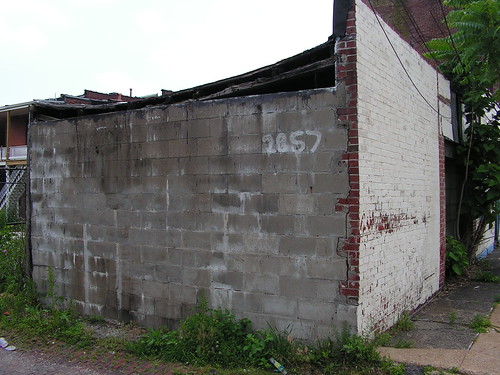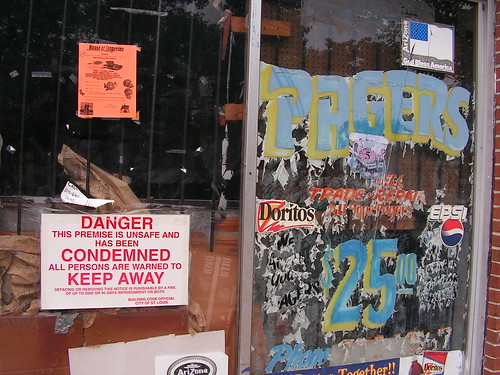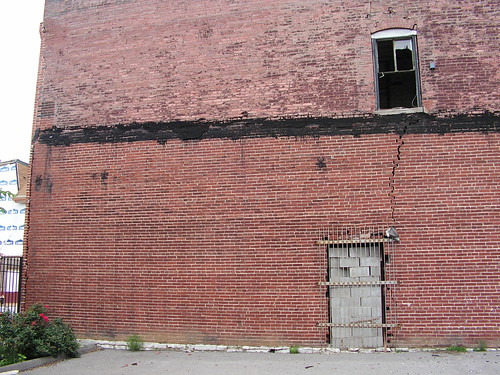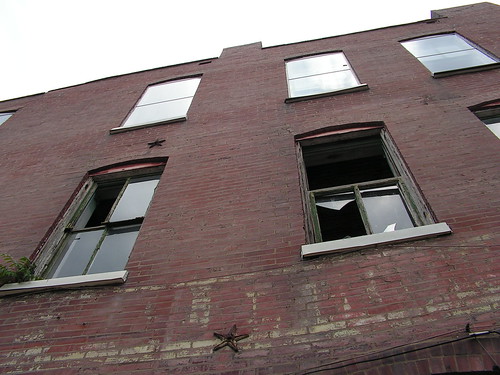Citygarden Dedication Today
At 10am this morning (Tuesday 6/30/09) Mayor Slay will dedicate Citygarden, the new 2-block long sculpture garden downtown. Before I get into the garden I want to talk about what existed on these two blocks previously.
The two blocks (bounded by Market St on the South, 10th on the West, Chestnut on the North and 8th on the East) were the last two blocks to have their historic long-standing structures razed for a grand vision of a Gateway Mall — a vision of a long green spine that dates back to the early 20th Century (map). The city was vastly different then — it was populated, dirty (coal was still burned for heat) and anything but uniform. Early planners sought to clear away a section of the city to offer some relief and to bring some order to a bustling chaotic city.
The problem is city leaders over the decade became addicted to demolition as a solution. That new order would invigorate the city, they thought. But it was the unplanned chaos that gave the city life.
In 1993 two city blocks remained to complete this ordered new vision.

Stunning huh? But in a city with more open green space than people to occupy what we had it was decided we should create more.
What we got was two more passive (boring) city blocks. I argued with the city’s head architect at the time but it did no good:
Unlike some older mall blocks, particularly ones west of Tucker Boulevard, Royse said, the new ones “will be inviting and attractive . . . and
people should use the mall more.†(Post-Dispatch of July 16, 1993)
Royse, now retired in Seattle, was in town recently. I saw him last Thursday at the Loop Trolley forum. He had not yet seen how his two blocks of the mall, the last two, had been altered.

But the two blocks were not inviting, unless you wanted to be alone with nothing to do. The buildings surrounding these two blocks have been uninviting since new. Blank walls, raised entrances, parking garage entries. The stuff that sucks life out of a city.
And now, these two blocks are once again recreated. They are the opposite of the 1993-2008 blocks — a good thing as Martha Stewart would say.

From what I’ve seen from Citygarden so far it is interesting, complex (requiring exploration), colorful, and a delight to the senses. With a permanent cafe on the Eastern block you can stay and enjoy the space. There is seating throughout. We shouldn’t have razed the old buildings but once they were gone we should have created dynamic space. Instead we got 16 years of dead passive space added to the many acres of additional dead passive space we’ve had for decades longer.
While I like the Citygarden I don’t like the process that led to today. I wrote the following just over 2 years ago (see post):
In a classic St. Louis move, the city’s “leadership†is already moving forward with a plan the public has yet to see. Mayor Slay, Aldermanic President, Alderman Phyllis Young, and Downtown Parnership’s Jim Cloar last week talked of the newest concept as a done deal even though we the public have not seen anything yet. Typical.
The public open house is scheduled for this evening, Monday June 11, 2007 at 6:30pm in the rotunda at City Hall. This is one of those meetings designed to give the appearance of public participation without any actual participation. The usual round of types — officials, business executives, etc… — have already approved of the plan on our behalf. How big of them to do so. I assume tonight will also be a chance for all these folks to congratulate each other on a job well done. I’ll be there simply because I need to see what sort of disastrous plan the city has drafted this time. Any comment forms will likely be a waste of paper.
Hopefully these two blocks will serve as an example of the level of excitement necessary as we look at the remaining blocks of the Gateway Mall. I’ve got a good relationship with Patricia Roland-Hamilton, the person in charge of The Gateway Mall Project. We’ve had ongoing conversations about the qualities needed along the mall.
Once inside I’ll do a full review of Citygarden. Again, I like it already. But I have noticed a few details I would like to have seen done differently. These can now serve as lessons for when the remaining blocks are addressed.
– Steve Patterson









